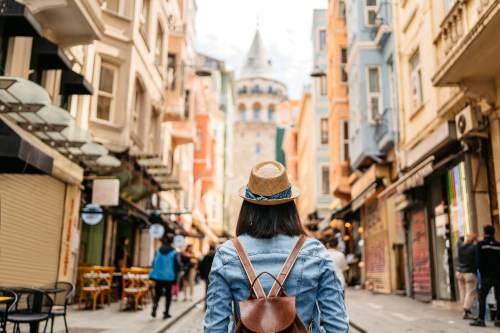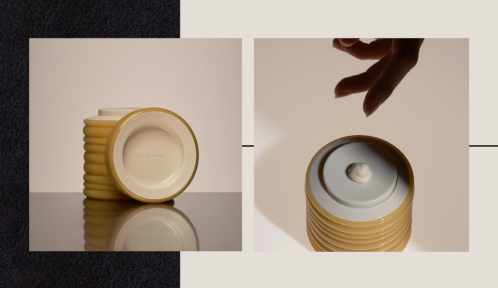In urban areas where boutique fitness studios and workout joints are popping up faster than you can say “pass the La Croix,” more and more dedicated LGBTQ+ spaces are becoming extinct. The physical places—bars, clubs, baths—where queer and lesbian folks met, socialized, and fell in love in the ’90s and early ’00s are closing one-by-one, and have been for the past two decades.
According to Market Watch, in 2017, only 36 of the 1,357 LGBTQ bars in the world were lesbian bars, and that’s down from 56 in 2014. In New York City, there are only four lesbian bars, and in other big cities like San Francisco, Philadelphia, and New Orleans, there are none. But, as Will Lanier, executive director of The OUT Foundation and founder of OUTWOD puts it: When you’re a minority group—be it sexuality, race, or gender—having a safe, shared space is life-saving.
So…what now?
Queer wellness spaces and LGBTQ+ fitness communities are emerging in their place. For folks already entrenched in the fitness and wellness scene, this shift from bars-to-barre won’t come as a surprise. We’ve already seen that wellness spaces are replacing the local watering hole en masse for people of all identities.
Recently, there’s been an influx of fitness classes and groups created specifically for LGBTQ+ folks. For example, Laughing Lotus in New York City, owned and operated by renowned yogi Dana Flynn, recently launched a Queens and Queers: Fluid Flow yoga class, while OUTWOD hosts a series of CrossFit (and similarly high intensity-style) classes all over the United States for LGBTQ+ athletes. In a lot of ways, these spaces offer queer folks what the bars once did: community.
Queer-only classes foster community
We’ve see a ton of fitness studios offer classes for queer folks during Pride—but one month during the year isn’t enough. “I don’t mean to sound petty. While I love seeing rainbows and feeling celebrated in June, that’s only one month. What about being gay friendly and focused the rest of the year?” says Lanier.
“The best part of getting a queer class on the schedule is that it creates consistency, which guarantees that you’ll be making friends.” —Dana Flynn, owner of Laughing Lotus
In fact, both Flynn and Willow Merveille, founder of Naked In Motion in Boston and NYC, note that the the popularity of their Pride classes prompted them to add standing queer classes to their schedules. “Our Pride class was full with people who had never done yoga before, so we realized a queer class was something people really want,” Merveille says.
With weekly meet-ups, familiarity fosters community. “I think the best part of getting a queer class on the schedule is that it creates consistency, which guarantees that you’ll be making friends and cultivating a feeling of togetherness,” says Flynn. “Whether people come with friends or come alone, I like to say the class is for anyone who wants to come as themselves and rip up the mat and find a home.”
Board president of CRUX Climbing Julian Paul Andrews says the importance of these types of modern-day LGBTQ+ communities, where members can learn from and lean on each other, cannot be emphasized enough. “Groups that understand the needs of their community are critical to combating open hostility and ambivalence, as well as paving the way for future generations.”
We’ve needed queer fitness classes all along
Queer-only fitness classes may offer the similar community-making magic that the bars once did, but they’ve also been making fitness more accessible to the LGBTQ+ community for the first time. “The reason queer and transgender folks haven’t been participating in the fitness scene is because there have never been opportunities for us,” says Dean T., yoga instructor of Naked In Motion’s Women’s & Trans class.
“It’s super important for LGBTQ+ folks to feel supported and safe in their fitness space because that’s where we’re going to take care of our bodies,” says Lanier. “If the gym doesn’t feel safe and supportive for them, LGBTQ+ folks simply won’t go.” And it’s important to note: Making your studio feel safe entails more than just hanging a rainbow flag. It requires physical and foundational changes. “Most changing areas are gendered, workout equipment can be gendered, and gym staff are largely untrained in LGBTQ cultural awareness,” says Andrews.
Classes specifically for queer folks are intentionally affirming, explicitly safe spaces led by members of the LGBTQ+ community. “As a queer person, knowing that the instructor is also queer lowers barriers of entry. It makes me feel more comfortable. I also know I won’t have to worry about microaggressions I might otherwise face in a fitness class,” Dean says.
The future of queer spaces
To be clear, just because there is great value in these emerging queer fitness spaces doesn’t means there is benefit in the closing of lesbian and queer bars. Just the opposite. But in fact, it would be a shame for these emerging queer fitness spaces to become the only social option for queer folks, just as the bars were years ago.
IMO, this is a case of the more the merrier—especially when the mere existence of physical queer spaces signifies queer presence, celebration, and power.
No matter what the future holds for other LGBTQ+ spaces, the benefit of these queer wellness meccas can’t be understated. And because some of these on-the-schedule classes were born out of 2018 Pride, who knows what 2019 Pride will bring.
Sure, they may not have the old-school Jukeboxes some of the queer bars (*cough* Henrietta Hudson *cough*) are known for. But it’s a good bet, you’ll hear Lady Gaga’s “Born This Way” or Diana Ross’s “I’m Coming Out.”
Before you hit up a queer fitness class, here are some tips for making friends at the gym. BTW, CrossFit is *not* down with LGBTQ+ hate.
Sign Up for Our Daily Newsletter
Get all the latest in wellness, trends, food, fitness, beauty, and more delivered right to your inbox.
Got it, you've been added to our email list.











